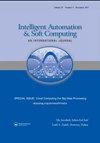Smart and Automated Diagnosis of COVID-19 Using Artificial Intelligence Techniques
IF 2
4区 计算机科学
Q2 Computer Science
引用次数: 2
Abstract
Machine Learning (ML) techniques have been combined with modern technologies across medical fields to detect and diagnose many diseases. Mean-while, given the limited and unclear statistics on the Coronavirus Disease 2019 (COVID-19), the greatest challenge for all clinicians is to find effective and accu-rate methods for early diagnosis of the virus at a low cost. Medical imaging has found a role in this critical task utilizing a smart technology through different image modalities for COVID-19 cases, including X-ray imaging, Computed Tomography (CT) and magnetic resonance image (MRI) that can be used for diagnosis by radiologists. This paper combines ML with imaging analysis in an artificial deep learning approach for COVID-19 detection. The proposed methodology is based on convolutional long short term memory (ConvLSTM) to diagnose COVID-19 automatically from X-ray images. The main features are extracted from regions of interest in the medical images, and an intelligent classifier is used for the classification task. The proposed model has been tested on a dataset of X-ray images for COVID-19 and normal cases to evaluate the detection performance. The ConvLSTM model has achieved the desired results with high accuracy of 91.8%, 95.7%, 97.4%, 97.7% and 97.3% at 10, 20, 30, 40 and 50 epochs that will detect COVID-19 patients and reduce the medical diagnosis workload. © 2022, Tech Science Press. All rights reserved.利用人工智能技术对COVID-19进行智能自动诊断
机器学习(ML)技术已经与医学领域的现代技术相结合,以检测和诊断许多疾病。与此同时,鉴于2019冠状病毒病(COVID-19)的统计数据有限且不明确,所有临床医生面临的最大挑战是找到有效和准确的方法,以低成本进行病毒的早期诊断。医学成像在这项关键任务中发挥了作用,通过对COVID-19病例进行不同图像模式的智能技术,包括可用于放射科医生诊断的x射线成像、计算机断层扫描(CT)和磁共振成像(MRI)。本文将机器学习与成像分析结合起来,采用人工深度学习方法进行COVID-19检测。该方法基于卷积长短期记忆(ConvLSTM)从x射线图像中自动诊断COVID-19。从医学图像中感兴趣的区域提取主要特征,并使用智能分类器进行分类任务。在新冠肺炎和正常病例的x射线图像数据集上对所提出的模型进行了测试,以评估检测性能。ConvLSTM模型在10、20、30、40和50个epoch的准确率分别为91.8%、95.7%、97.4%、97.7%和97.3%,达到了预期的结果,可以检测出COVID-19患者,减少医疗诊断工作量。©2022,科技科学出版社。版权所有。
本文章由计算机程序翻译,如有差异,请以英文原文为准。
求助全文
约1分钟内获得全文
求助全文
来源期刊

Intelligent Automation and Soft Computing
工程技术-计算机:人工智能
CiteScore
3.50
自引率
10.00%
发文量
429
审稿时长
10.8 months
期刊介绍:
An International Journal seeks to provide a common forum for the dissemination of accurate results about the world of intelligent automation, artificial intelligence, computer science, control, intelligent data science, modeling and systems engineering. It is intended that the articles published in the journal will encompass both the short and the long term effects of soft computing and other related fields such as robotics, control, computer, vision, speech recognition, pattern recognition, data mining, big data, data analytics, machine intelligence, cyber security and deep learning. It further hopes it will address the existing and emerging relationships between automation, systems engineering, system of systems engineering and soft computing. The journal will publish original and survey papers on artificial intelligence, intelligent automation and computer engineering with an emphasis on current and potential applications of soft computing. It will have a broad interest in all engineering disciplines, computer science, and related technological fields such as medicine, biology operations research, technology management, agriculture and information technology.
 求助内容:
求助内容: 应助结果提醒方式:
应助结果提醒方式:


